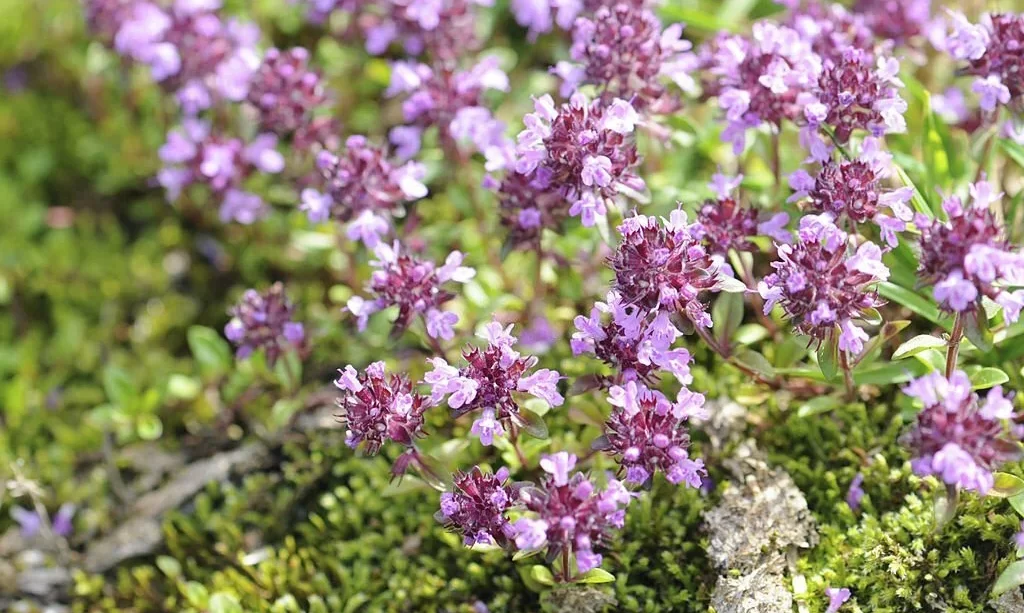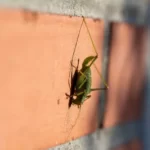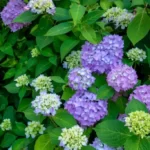Gardening enthusiasts often seek the perfect balance of beauty and practicality in their landscapes. Among the many options available, ground cover plants play a crucial role in achieving this balance. They offer a lush, low-maintenance solution for filling in spaces, suppressing weeds, and adding visual interest to gardens. One such ground cover plant that has garnered attention in the world of landscaping is creeping thyme. However, a pressing question arises: Is creeping thyme invasive? In this article, we delve into the world of ground cover gardening, exploring the characteristics of creeping thyme, its uses, and its potential for invasiveness. Join us as we unravel the secrets of this fragrant, creeping herb and evaluate its place in the horticultural landscape.
What Is Creeping Thyme?
Creeping thyme, scientifically known as Thymus serpyllum, is a charming herbaceous perennial that belongs to the mint family (Lamiaceae). Native to Europe and Western Asia, this low-growing plant has won the hearts of gardeners and landscapers for its unique combination of ornamental beauty and delightful fragrance. Creeping thyme is known for its small, aromatic leaves and clusters of dainty, tubular flowers that come in a range of colors, including shades of pink, purple, and white. This herb’s alluring fragrance makes it a favorite not only in the garden but also in culinary applications. It’s often referred to as “mother of thyme” due to its visual and olfactory similarity to the common thyme herb (Thymus vulgaris).
- ORGANIC
- ORGANIC
The Appeal of Ground Cover Plants
Ground cover plants have long been cherished in the world of gardening and landscaping for a multitude of reasons. These low-growing plants provide several benefits that make them a valuable addition to any garden. Here are some of the key factors that contribute to the appeal of ground cover plants:
Weed Suppression:
- Ground covers create a dense carpet of foliage that effectively suppresses weeds. By shading the soil and preventing sunlight from reaching weed seeds, they reduce the need for constant weeding and herbicide use.
Erosion Control:
- Ground cover plants help stabilize the soil, preventing erosion, especially on slopes and embankments. Their root systems bind the soil particles together, reducing the risk of soil loss due to wind or water.
Moisture Conservation:
- The thick foliage of ground cover plants acts as a natural mulch, reducing water evaporation from the soil. This helps maintain soil moisture and reduces the need for frequent irrigation.
Visual Interest:
- Ground covers offer an array of textures, colors, and fragrances, adding visual interest and diversity to a garden. They can be used to create defined borders, fill in gaps between larger plants, or carpet entire areas with their lush growth.
Low Maintenance:
- Ground cover plants are often low-maintenance, requiring less care than traditional lawns or larger garden plants. This makes them ideal for gardeners looking to reduce maintenance tasks.
Environmentally Friendly:
- Many ground cover plants are native or non-invasive species, making them ecologically responsible choices for landscaping. They can support local wildlife and pollinators.
In the upcoming sections, we will explore the world of creeping thyme, its characteristics, and the debate over its potential invasiveness. Understanding the role of ground cover plants and the specific traits of creeping thyme is essential for gardeners looking to strike that perfect balance between beauty and practicality in their landscapes.
Invasive or Aggressive? Defining the Terms
Before we delve into the specifics of creeping thyme and its potential invasiveness, it’s crucial to establish a clear understanding of the terms “invasive” and “aggressive” in the realm of horticulture.
Invasive Plants:
- Invasive plants are species that exhibit vigorous growth and can potentially harm ecosystems by outcompeting native plants. They have a tendency to spread rapidly and often lack natural predators in their new environments.
Aggressive Plants:
- Aggressive plants, on the other hand, may also exhibit robust growth but do not necessarily pose ecological threats. These plants may expand their territory within a garden or landscape but typically do not escape and establish themselves in natural ecosystems.
Evaluating Creeping Thyme’s Invasiveness
The question of whether creeping thyme is invasive or merely aggressive hinges on several factors:
Growth Rate:
- Creeping thyme is known for its vigorous, low, and spreading growth habit. It can form dense mats of foliage that effectively cover the ground. However, this growth rate doesn’t necessarily make it invasive.
Spreading Tendencies:
- While creeping thyme can spread both by seeds and by sending out runners (stolons), the extent of its spread can vary depending on various factors. Some gardeners may welcome its spreading tendencies to fill in spaces, while others may find it challenging to contain.
Adaptability:
- Creeping thyme is adaptable to a range of soil types and climates, making it a versatile choice for various garden settings. Its adaptability may contribute to its success as a ground cover plant.
Ecosystem Impact:
- Evaluating the invasiveness of creeping thyme also requires consideration of its ecological impact. Does it pose a threat to local ecosystems by outcompeting native plants or disrupting natural habitats? This aspect is crucial in determining its invasive potential.
Pros and Cons of Using Creeping Thyme
Gardeners often weigh the advantages and disadvantages of using creeping thyme as a ground cover plant in their landscapes. Here’s a closer look at the pros and cons:
Pros:
Aesthetic Appeal:
- Creeping thyme adds visual interest with its lush green foliage and colorful blooms. It can transform a plain garden bed into a vibrant and inviting space.
Fragrance:
- The delightful fragrance of creeping thyme’s leaves and flowers can enhance the sensory experience in your garden. It’s often used for creating scented walkways.
Low Maintenance:
- Once established, creeping thyme is relatively low-maintenance. It requires less mowing and watering compared to traditional lawns.
Weed Suppression:
- As an effective ground cover, creeping thyme naturally suppresses weed growth, reducing the need for constant weeding.
Cons:
Aggressiveness:
- Creeping thyme’s vigorous growth can sometimes lead to it spreading beyond the intended area. This can create challenges in maintaining boundaries.
Potential Invasiveness:
- In some regions, creeping thyme may escape garden confines and establish itself in local ecosystems, potentially displacing native plants.
Management:
- Keeping creeping thyme in check may require regular maintenance, such as pruning or edging, to prevent it from overtaking other garden elements.
Local Conditions:
- The invasiveness of creeping thyme can vary by region and local conditions. It’s essential for gardeners to consider their specific environment and ecological impact.
As with many aspects of gardening, the decision to use creeping thyme ultimately depends on individual preferences, local conditions, and the commitment to maintaining this versatile ground cover. In the following sections, we’ll explore gardeners’ perspectives and experiences with creeping thyme, providing insights into its use and management in diverse landscapes.
- SAFE FOR INGESTION; GCMS and Microbial Tested; Bottled in USA; GMO Free, Preservative Free, Artificial Ingredients Free, Paraben Free, Pesticide Free, Gluten Free, Vegan, Cruelty Free, Edible, Kid Safe (when diluted)
- Superior Organic Quality: Indulge in the robust essence of Zongle’s USDA Organic Thyme Essential Oil. This certification ensures that you’re using a product that meets the highest organic standards, guaranteeing a pure, natural oil free from synthetic additives and harmful chemicals, ideal for the discerning, health-conscious consumer.
- 100% Pure and Potent: Experience the full, rich aroma of thyme with Zongle’s 100% pure and natural essential oil. This high-quality oil captures the essence of thyme in its most potent form, perfect for those who appreciate the power of natural, unadulterated essential oils.
- Culinary Excellence: Elevate your culinary experiences with this food-grade thyme oil. Its distinctive and savory flavor is perfect for enhancing a variety of dishes, adding depth and aromatic flair to your cooking, and making it an essential ingredient for any gourmet kitchen.
- Natural Wellness Support: Harness the traditional benefits of thyme for your well-being. Known for its fighting properties, this essential oil is great for supporting the body, respiratory health, and overall vitality, making it a valuable addition to your natural health toolkit.
Gardeners’ Perspectives
To gain a comprehensive understanding of creeping thyme’s role in landscaping, it’s valuable to explore the experiences and perspectives of gardeners who have cultivated this ground cover plant. Their insights shed light on the practical aspects of growing and maintaining creeping thyme in diverse garden settings.
Success Stories:
- Many gardeners have reported successful and rewarding experiences with creeping thyme. They appreciate its ability to create beautiful, fragrant carpets and its contributions to a lush, low-maintenance garden.
Creative Uses:
- Gardeners have found innovative ways to incorporate creeping thyme into their landscapes. From creating scented pathways to using it in rock gardens, its versatility allows for creative design elements.
Challenges and Solutions:
- Some gardeners have encountered challenges related to creeping thyme’s spreading tendencies. They share their strategies for managing and containing the plant, including regular pruning and edging.
Local Insights:
- Gardeners from various regions offer insights into how creeping thyme behaves in different climates and environments. Local knowledge can inform decisions about its use.
Tips for Successful Creeping Thyme Gardening
For those considering or currently cultivating creeping thyme, here are some practical tips to ensure a successful and harmonious gardening experience:
Choose the Right Variety:
- Select a creeping thyme variety that suits your local climate and garden conditions. Different species may thrive in specific regions.
Plan for Containment:
- Define the boundaries of your creeping thyme planting area and consider using landscape edging or ground covers to prevent unwanted spreading.
Regular Pruning:
- Prune creeping thyme as needed to maintain its shape and prevent it from encroaching on other garden elements.
Provide Well-Drained Soil:
- Creeping thyme prefers well-drained soil. Amending your soil with organic matter can enhance its growth.
Monitor Moisture Levels:
- While established creeping thyme is drought-tolerant, it’s essential to monitor soil moisture during its initial growth stages.
Companion Planting:
- Pair creeping thyme with other companion plants that enhance its beauty and contribute to the overall garden ecosystem.
Conclusion
In the world of gardening and landscaping, the question of whether creeping thyme is invasive or simply aggressive offers a multifaceted perspective. It is a plant that has earned a special place in the hearts of gardeners for its aromatic charm, visual allure, and ability to fill in garden gaps.
The decision to include creeping thyme in your garden is one that ultimately depends on your individual gardening goals, local conditions, and your commitment to managing its growth. Gardeners have celebrated the beauty and practical benefits of this ground cover plant while acknowledging its tendencies to spread.
In conclusion, creeping thyme is a versatile and charming addition to landscaping when approached thoughtfully. By considering its characteristics, local conditions, and the experiences of fellow gardeners, you can make an informed choice that aligns with your vision for a vibrant, low-maintenance garden. Whether as a fragrant pathway or a lush carpet beneath flowering shrubs, the appeal of creeping thyme in the world of gardening remains undeniable.






